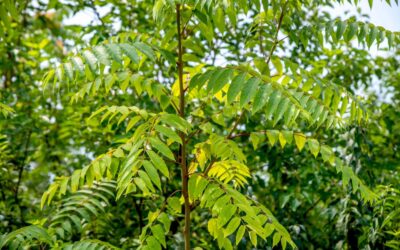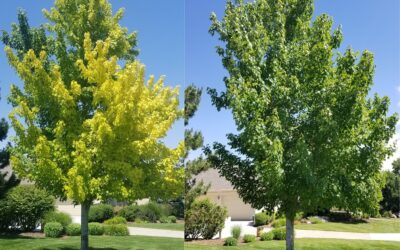With about 20 different species, this member of the rose family is a versatile, showy landscape plant that can be grown as a tall shrub or small tree. It’s a North American native, but varieties are also found in temperate areas of Northern Europe and China.
Height, Flowers, Fruits and Seeds
Serviceberries grow from six to twenty feet tall, depending on the cultivar, and produce showy, fragrant white flowers in early spring similar to lilac bushes. The flowers of most popular varieties have 1-2” petals and can bloom in small bunches or clusters of up to forty. Later in spring or early summer, the plant produces small berry-like dark red to purple fruit that is sweet at maturity, often compared to blueberries with a trace of apple flavor. The seeds impart an almond-like touch.
Foliage, Color and Bark Fissures
The leaves are thin, simple pointed ovals with lightly serrated edges, ranging from 1-4 inches long and varying in width depending on the cultivar. They’re a medium green in summer and turn brilliant shades of orange, red, or yellow before dropping in the fall, again dependent on the variety. The bark of older plants has attractive fissures, prompting many people to expose it by pruning lower branches to expose single or multi-stemmed trunks on taller-growing species.
Hardy and Drought-Tolerant, Easy to Maintain and Manageable
They’re all extremely hardy in cold climates and tolerate drought and alkaline soils making them ideal for Colorado’s mountains and high plains. Serviceberries are generally easy to maintain, but caterpillars and other herbivorous insects can occasionally cause problems. Diseases that affect other orchard trees can infect serviceberries, too, bur are generally manageable with reasonable attention and care.
Ideal Tree for Landscaping and Fruit Production
While some serviceberries are used only for landscaping, others, like the Saskatoon serviceberry, are grown for superior fruit production. Edible by humans and wildlife (although it can be toxic to some livestock), serviceberry fruit is high in potassium, iron, manganese, and aluminum and can be eaten both fresh and cooked. North American natives used it to make pemmican, a pudding or dried jerky-like food made from game meat and fat with the serviceberry added for both flavor and nutrition.
Modern humans enjoy serviceberries raw, as juices and jams, baked into pies, muffins or puddings, in ice-cream, or dehydrated like raisins. But the berries are only available for a few weeks in the late spring or early summer, so get them while you can. And expect plenty of competition from deer, rabbits, and birds.
If you’re considering adding a serviceberry or two to your landscape, or need maintenance of existing plantings, give Donovan Arborists a call at 303-623-8733.



